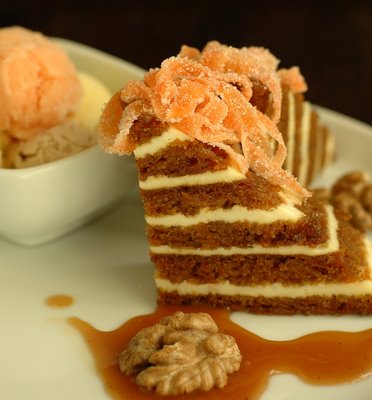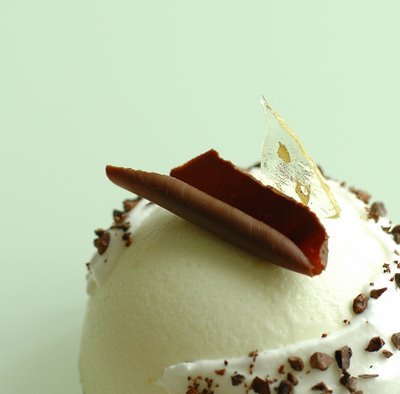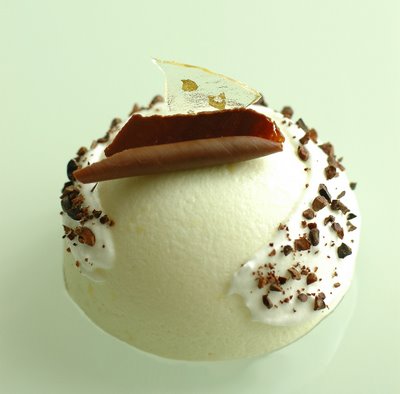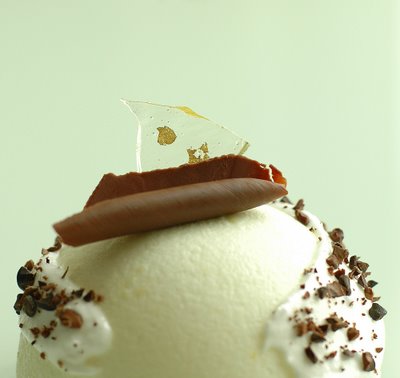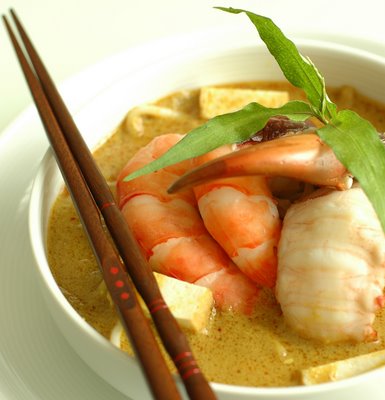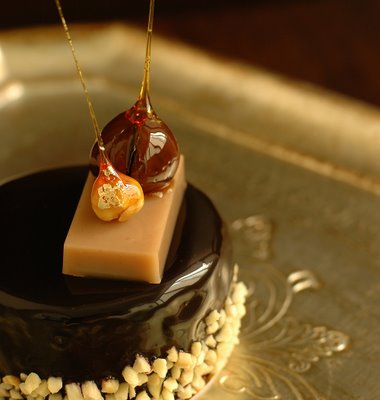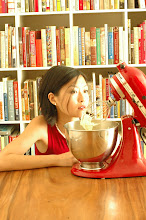In Search of Pizza Perfection
 If you love pizza, chances are, you already own a copy of American Pie: My Search for the Perfect Pizza by Peter Reinhart, an incredible single subject volume that not only surveys this master baker's favourite pizzerias from Naples to New York City, but offers a wealth of recipes and useful advice for anyone keen on replicating the quintessential pizza experience at home.
If you love pizza, chances are, you already own a copy of American Pie: My Search for the Perfect Pizza by Peter Reinhart, an incredible single subject volume that not only surveys this master baker's favourite pizzerias from Naples to New York City, but offers a wealth of recipes and useful advice for anyone keen on replicating the quintessential pizza experience at home.My favourite dough recipe from the book is the "Neo-Neapolitan Pizza Dough", which makes a thin crust that seems to stay crisp for longer than the "Napoletana Pizza Dough", thanks to the use of high gluten or strong bread flour rather than all-purpose. The Napoletana dough, of course, is the purist's choice (see S's meticulously annotated adaptation of this recipe). Both are great (as are the other 9 or so dough recipes in the book); it just boils down to a matter of personal preference. Part of the fun is trying them all so as to figure out what best suits your taste. In terms of equipment, if you don't own a baking stone or HearthKit, Peter Reinhart's nifty trick of using an inverted large, flat-bottomed cast-iron pan as a stand-in thermal mass works very well.
 The latest dough recipe I've been tinkering with comes from In Search of Perfection by Heston Blumenthal. If you're a huge fan of Family Food, you already know to expect that in order to follow one of his recipes you'll be jumping through hoops, but the results more often than not make the immense effort required worth the while. 8 classics (from roast chicken to steak) have been reinvented in the quest for perfection. Having tried his pizza dough recipe several times in the past month, I must say while it may not be everybody's idea of perfection, it sure brings you that much closer to understanding what perfection, if there is such a thing, might taste like. If you ask me, I think it tastes if not perfect - a term one hesitates to use given the stridently divergent schools of thought as to what constitutes a perfect pizza - then at least an instance of excellence. As does W, my resident pizza fascist, and just about the fussiest person I know when it comes to pizza (or anything else that counts as dinner, come to think about it).
The latest dough recipe I've been tinkering with comes from In Search of Perfection by Heston Blumenthal. If you're a huge fan of Family Food, you already know to expect that in order to follow one of his recipes you'll be jumping through hoops, but the results more often than not make the immense effort required worth the while. 8 classics (from roast chicken to steak) have been reinvented in the quest for perfection. Having tried his pizza dough recipe several times in the past month, I must say while it may not be everybody's idea of perfection, it sure brings you that much closer to understanding what perfection, if there is such a thing, might taste like. If you ask me, I think it tastes if not perfect - a term one hesitates to use given the stridently divergent schools of thought as to what constitutes a perfect pizza - then at least an instance of excellence. As does W, my resident pizza fascist, and just about the fussiest person I know when it comes to pizza (or anything else that counts as dinner, come to think about it). Aside from good dough, the key to pizza greatness lies with heat - the EU pizza copyright proposal specifies an oven-surface temperature of 485°C and a cooking time of between 60 and 90 seconds! Your average domestic oven peaks at a far lower temperature (so the pizza takes longer to cook, which changes the character of the pizza, and not for the better), thus prompting Chef Blumenthal to amusingly recount the hoops he jumps through to buck his Gaggenau's top temperature, and how he manages to cut his baking time down to 90 seconds by inserting a cast iron pan (preheated over high heat for 20 minutes) into the preheated oven with the grill whacked on full, thus getting the heat above and below the pizza as hot and as even as possible. Which, of course, gives me yet another reason to lust after this top-of-the-line cooker - try as I might, my cantankerous oven peevishly refused to get sufficiently hot; my best baking time (with dutifully preheated cast iron pan in place) never got any speedier than 7 minutes.
Aside from good dough, the key to pizza greatness lies with heat - the EU pizza copyright proposal specifies an oven-surface temperature of 485°C and a cooking time of between 60 and 90 seconds! Your average domestic oven peaks at a far lower temperature (so the pizza takes longer to cook, which changes the character of the pizza, and not for the better), thus prompting Chef Blumenthal to amusingly recount the hoops he jumps through to buck his Gaggenau's top temperature, and how he manages to cut his baking time down to 90 seconds by inserting a cast iron pan (preheated over high heat for 20 minutes) into the preheated oven with the grill whacked on full, thus getting the heat above and below the pizza as hot and as even as possible. Which, of course, gives me yet another reason to lust after this top-of-the-line cooker - try as I might, my cantankerous oven peevishly refused to get sufficiently hot; my best baking time (with dutifully preheated cast iron pan in place) never got any speedier than 7 minutes.Short of buying a new built-in oven - something I don't plan to do until we move from our tiny apartment - I would have to seek alternative recourse. Salvation came in the unassuming form of a large, round and red object - the self-contained pizza oven from G3 Ferrari. While it's unlikely to take pride of place on your countertop like say a beautiful stand mixer or dead sexy espresso machine would, it more than makes up for its utilitarian appearance with standout performance. I would go so far as to say with results this fantastic, I am prepared to relinquish any delusions I may have as to being an adherent of that overused Bauhaus mantra. This clamshell-shaped electric gadget has a built-in refractory firestone bed which not only delivers heat evenly but absorbs moisture from the dough, as well as a top heating element on the underside of the cover/lid to ensure the top of your pizza bakes at a similar rate to the crust - coordination of top and crust being critical to a pizza's success. At the highest heat setting, the temperature purportedly reaches a searing 470°C - I don't own one of those neat digital temperature guns that reads up to 500°C, and so had no way of testing this. What I do know is that once I got the hang of it, it consistently took all of 4 minutes to cook a pizza to magnificent doneness, thus shaving an impressive 3 minutes off my previous record with a conventional oven.
 Back to the dough. While I can't vouch that my taste in pizza dovetails with yours, Heston Blumenthal's recipe certainly tasted like I am on the right path to pizza nirvana. The secret to its fantastic flavour is adding a proportion of pre-ferment - a small amount of dough left to ferment in the fridge for at least 12 hours - to a larger quantity of dough. The longer dough is left, the more its flavour develops. But the longer dough is left, the more the gluten relaxes and loses elasticity. The answer? Pre-ferment, prepared for flavour, mixed with dough that still possesses extensibility. Subject to the right heat conditions, the dough bakes into a light and crisp pizza crust with an airy, almost delicate interior structure, so full of creamy, bready, toasty flavour that you'll be eating that puffy, golden brown cornicione right down to the last crumb.
Back to the dough. While I can't vouch that my taste in pizza dovetails with yours, Heston Blumenthal's recipe certainly tasted like I am on the right path to pizza nirvana. The secret to its fantastic flavour is adding a proportion of pre-ferment - a small amount of dough left to ferment in the fridge for at least 12 hours - to a larger quantity of dough. The longer dough is left, the more its flavour develops. But the longer dough is left, the more the gluten relaxes and loses elasticity. The answer? Pre-ferment, prepared for flavour, mixed with dough that still possesses extensibility. Subject to the right heat conditions, the dough bakes into a light and crisp pizza crust with an airy, almost delicate interior structure, so full of creamy, bready, toasty flavour that you'll be eating that puffy, golden brown cornicione right down to the last crumb.We're going away next week so this is my last post of 2006 - here's wishing everybody A Very Merry Christmas & Happy New Year!
PS: If you reside in Singapore, the G3 Ferrari pizza oven can be found in the small but carefully edited selection of products available at the retail shop in Shermay's Cooking School. Also, the shop now carries Mario Batali's The Italian Kitchen range of tools (including this wonderfully-designed set of nesting prep bowls in funky melamine and this generously-sized dough separator/counter scraper, as pictured above).









